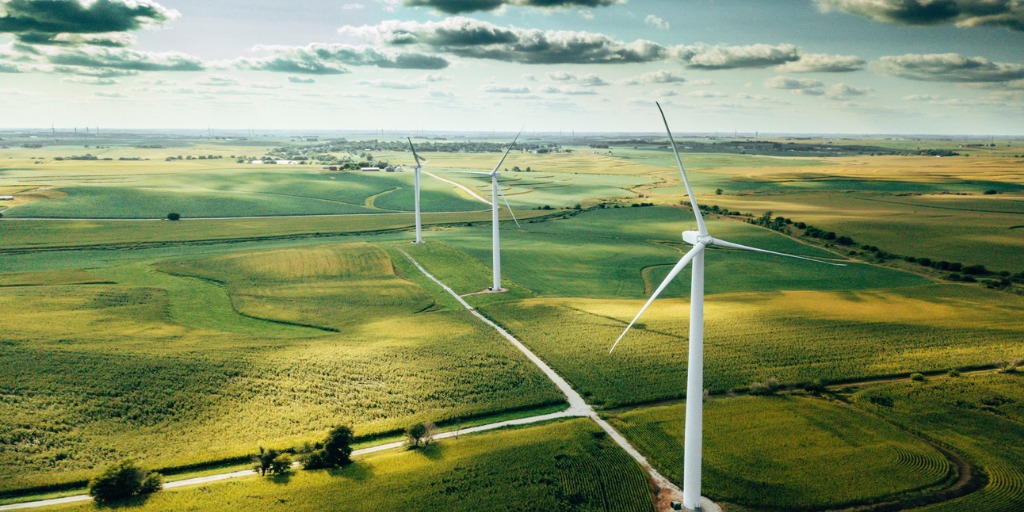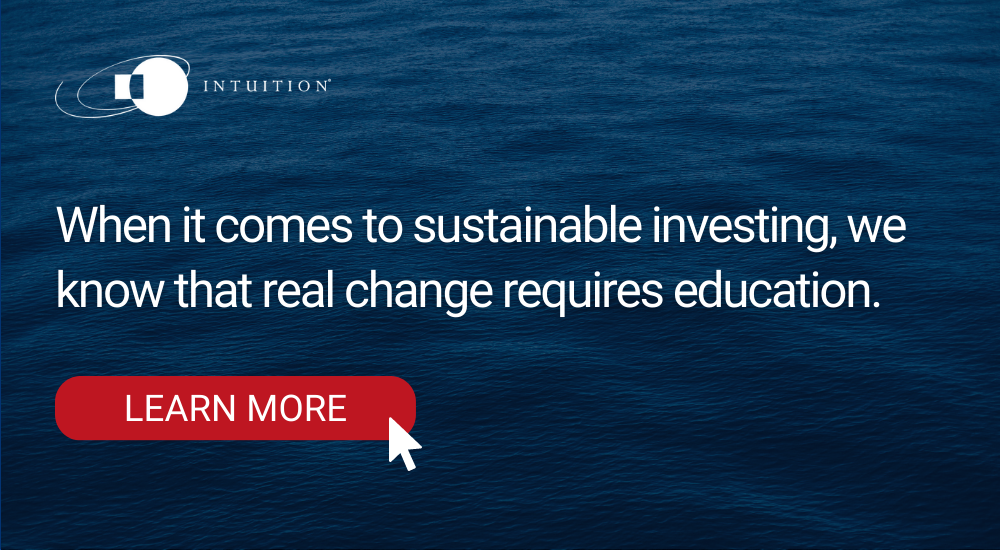
Climate Change: The New Frontier of Financial Regulation
This article is taken from a discussion held between Intuition and three industry leaders on the area of climate change in the world of finance.
In this part of the discussion, Thomas Verhagen, co-founder of WeESG, Clarisse Simonek, a Sustainable Finance Strategy Advisor, and Paul Fisher, a former Bank of England Executive Director, EU High Level Expert Group and UK Green Finance Task Force member, discuss the dynamic environment that is climate change-related regulation in the financial industry.
Related Webinar: Opportunities, Risks, And Regulation – What To Expect From Climate Change

Thomas Verhagen –Co-Founder WeESG

Clarisse Simonek – Sustainable Finance Strategy Advisor

Paul Fisher – former Bank of England Executive Director, EU High Level Expert Group Member and UK Green Finance Task Force
The Why of Environmental Finance
Thomas Verhagen:
Paul, Clarisse, we had a brief prep session beforehand where we were looking at the financial landscape, asking, what is the landscape? What does it look like? What have we seen in the past few years? And also, what can we expect from the future?
Maybe we could briefly touch upon this domain of environmental finance and regulation.
Why is it emerging? And why does it seem to be amid our regulatory efforts in systemic risk, and prudential supervision, disclosure, and even on the monetary policy side?
Paul, could you give us a bit of color around this, please?
Paul Fisher:
It seems like a lot has changed over the last five years, and sustainable finance has gradually been moving more and more mainstream, so it’s not surprising that financial regulation is coming more into the picture. In terms of why financial regulators are interested, I think it’s very straightforward. It’s part of their core mission. The risks from climate change actually impact what regulators are required to do. So, this is not about new mandates, new objectives, or new laws, in that sense. It’s about what the regulators have to do in order to meet their existing objectives.
For example, regulators have to ensure soundness of the financial system, and the safety and soundness of individual firms. Climate change represents a material threat to those firms and so the regulators are obliged to take those risks into account and check that firms are managing them.
Similarly, for the conduct regulators who are there to make sure that products are not mis-sold and to ensure that there is competition in the markets, green funds have emerged and in order to protect investors and consumers, they need to take action to ensure that their objectives are met.
We’ve got a range of regulators really just scratching the surface on this. I’ll just say one more thing, which is, there is a regulatory cycle most people don’t appreciate. It starts off by the regulator spotting an issue. They research it, they’ll write some sort of study on it to explore what the issues are, they’ll gather evidence from industry, they’ll come up with a white paper to say what best practice looks like. Then, they will notice that not all firms are following best practice and they will start to introduce rules to make sure that happens. That feels to me about the stage we are with the advanced guard of the regulators at the moment. They’ve done their research, they’ve published what they think best practice looks like, and now they are just beginning to introduce rules.
So far, we have supervisory expectations in the UK, we have the Senior Manager’s regime around governance, and now we’re going to get disclosure requirements which are currently under consultation.

Thomas Verhagen:
Thank you, Paul. Of course, you are very well placed to have this bird’s eye overview of the regulatory landscape, not just in the UK, or in Europe, but wider across the globe through all of the work you’ve been doing in this space over the course of the past five years.
If I can invite a practitioner’s perspective on this as well, Clarisse, it’s not just a regulatory drive that is pushing this agenda forward? What do you see on the product and the client side as a practitioner?
Clarisse Simonek:
The industry has certainly been through a journey in terms of the climate and I’ll focus on the on the risk aspect.
We started as an industry with carbon footprinting. If I must confess, and I think we should confess as an industry, we didn’t necessarily know what question we were trying to answer with carbon footprinting. But then we paused and asked ourselves ‘if we want to assess risk as the regulators and as our clients are asking us to do, how do we do it?’.
Related article: Greening the Grid is Sustainability Step One – How Can it be Done?
That’s a discussion we’ve had in the past, Thomas, back at Cambridge, when we were trying to figure out how do we best support the industry, which wants to understand (in a more robust way) what are the risk channels that climate change has? Taking into account an investment portfolio, financial product, etc.
‘If we want to assess risk as the regulators and as our clients are asking us to do, how do we do it?’
One of the things we did at the time was understand if climate regulation is changing, what is the impact of the margins of sectors? The margins of companies? And how do we integrate that in our decision making to make our portfolios more resilient to these risks?
As time went on, this understanding became a lot more sophisticated. We started integrating customer preferences on transitioning to a low carbon society, and also supply chain. We transitioned from a general crude understanding of how business models can in theory be impacted by this journey to a low carbon society, to actually thinking of and calculating transition risk. Physical risk came a bit later due to its complexity.
For example, 10/15 years ago, I used to work at an agricultural trading company, and we didn’t really care where the rice came from, or where the fruit came from, but you do need to know those things if you are thinking of physical risk.
Related article: The Importance of Executive Leadership in SRI
We’re now looking at regulators asking for further disclosure, and that’s certainly going to enhance a lot, not only in terms of the availability, but also the quality of the information. It’s not just about the data, though. It’s about understanding, how do you interpret that data? How do you, and whether you, include it in the decision making of your portfolios? What are the implications of that?
What I would highlight is that climate risk isn’t a privilege of ESG funds. It’s present in all funds in all financial products that are touching upon sovereign risk sector risk, etc. I think that the regulation is going to pick up on that quite quickly. And it has been picking up on that up to now.

Climate risk inevitability
Thomas Verhagen:
Paul, it seems like the climate risk aspect that Clarisse has touched upon, and that you touched upon as well, it almost feels from my perspective to be unavoidable. That all financial firms are going to be confronted with this.
Is that a drive you see from the regulatory side as well? That this is something that you can’t really cop out of?
Paul Fisher:
It is, and this has been entirely predictable, and I think continues to be largely predictable going forward.
In the short run, what we would expect to see is regulators fleshing out their standard principles for regulation. The standard approach is the three pillars, which some people will be familiar with, others not, so let me very quickly mention them.
Disclosure
Pillar three is actually the one where most is happening, which is disclosure.
We’ve now seen both the UK and the EU announce proposals to make disclosure mandatory, not just for the financial sector, but for across the industry.
Supervisory Intention
Pillar two is supervisory intervention, idiosyncratic intervention in the firm, to make sure people are managing their risks properly.
That will lead to things like stress tests, it can also lead, in the case of banks, for example, to capital add-ons if you’re not doing risk management properly. That can be a serious cost if you’re not taking this seriously.
Minimal Capital Requirements
What we’ve seen the least progress on yet is minimum capital requirements changes.
There is going to be a lot more risk in the financial system than we have appreciated arising from climate change. How that gets reflected in absolute and relative risk requirements is going to be an interesting debate which, the Basel Committee for example, are working on.
That’s what the short run looks like.
Related article: Tough New Sustainability Rules Are Here – Is Your Company Ready?
If we look ahead, say 10, 20, 30 years, we’re now seeing governments announce targets for net zero emissions, often by 2050. We don’t know yet how those targets are going to be met by different parts of the economy, by different industries.
Don’t wait for the government to come along and tell us what we’re going to have to do. We should be thinking, how are we going to be consistent with this overall trajectory?
My expectation is every industry will have to come up with the ways in which it is going to support that transition to net zero by 2050. That may, at some point, likely become a requirement, but it would certainly be good practice for every firm, every industry, to be thinking now how are we going to do this?
Don’t wait for the government to come along and tell us what we’re going to have to do. We should be thinking, how are we going to be consistent with this overall trajectory? It’s no good thinking we’re going to be the industry that’s allowed to still emit, because actually, net zero isn’t even a stopping point. I think it’s pretty predictable, that we will end up with targets for net negative in order to restore the level of greenhouse gas emissions in the atmosphere back to normal levels. Net zero is only an intermediate target.
There’s a lot more work to be done and I expect regulators will play their role in that and to be expected by governments to play their role in helping that.
For now, it’s are you managing your risks?
Next, it will be how are you transitioning your business to be in line with the government’s commitment to net zero?
We haven’t done that yet, but it’s coming.


